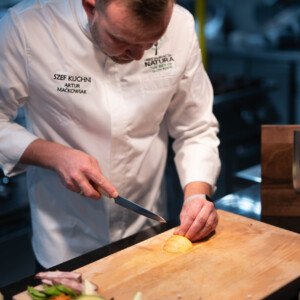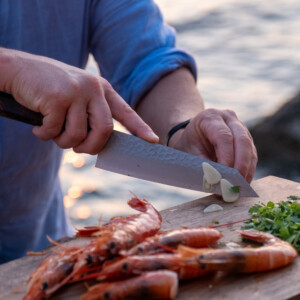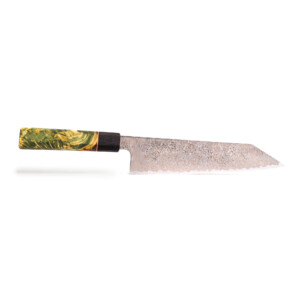Japanese knives are renowned for their exceptional sharpness and precision in cutting. They are an essential tool in any chef’s kitchen and require proper care and maintenance to keep them performing at their best. In this article, we will delve into the world of Japanese knives and explore the various types available, as well as the importance of proper maintenance, cleaning, sharpening, and caring for different types of Japanese knives.
Understanding Japanese Knives
Japanese knives are known for their lightweight, thin and sharp blades that require proper handling and maintenance. Different types of Japanese knives are designed for specific tasks such as slicing, chopping, carving, and filleting. Understanding the different types of Japanese knives will give you an advantage in choosing the right one for your kitchen tasks.
Types of Japanese Knives

The most common types of Japanese knives include the Gyuto, Santoku, Nakiri, Deba, and Sujihiki. The Gyuto is a general-purpose knife used for slicing and chopping. Its pointed tip makes it ideal for precision work. The Santoku is a versatile knife used for slicing, dicing, and chopping. Its wide blade and curved edge make it perfect for chopping herbs and crushing garlic. The Nakiri is a vegetable knife used for slicing vegetables. Its straight blade and squared-off tip make it easy to chop vegetables into uniform pieces. The Deba is a heavy-duty knife used for filleting fish and chopping poultry. Its thick spine and pointed tip make it ideal for breaking down meat and poultry. The Sujihiki is a slicing knife used for slicing cooked meats and fish into thin cuts. Its long, narrow blade and sharp edge make it perfect for slicing through delicate meats.
The Importance of Proper Maintenance
Proper maintenance of Japanese knives is essential for their longevity, and to keep their sharpness intact. Knives that are not maintained properly can become dull, rusted, or develop chips in their blades, making them ineffective in the kitchen. To maintain your Japanese knives, it’s important to wash and dry them immediately after use. Avoid using abrasive sponges or harsh detergents that can damage the blade. Instead, use a soft cloth and mild soap to clean the blade. It’s also important to sharpen your knives regularly using a sharpening stone or honing rod. This will help to keep the blade sharp and prevent it from becoming dull over time.
Additionally, it’s important to store your Japanese knives properly to prevent damage to the blade. Never store your knives loose in a drawer where they can become damaged or dull from rubbing against other utensils. Instead, use a knife block or magnetic strip to store your knives safely and keep them within easy reach while cooking.
By understanding the different types of Japanese knives and properly maintaining them, you can ensure that your knives will last for years to come and remain sharp and effective in the kitchen.
Cleaning Your Japanese Knives
Cleaning your Japanese knives is an important aspect of maintenance. Proper cleaning techniques will prevent rust and corrosion, keeping your knives looking great and performing optimally. Japanese knives are known for their sharpness and precision, and with the right care, they can last a lifetime.
Washing Techniques
When washing your Japanese knives, it’s important to be gentle and use the right tools. Avoid using harsh detergents or abrasive sponges that can scratch your knife’s blade. Instead, rinse your knife with warm water and use a soft sponge or cloth to clean the blade. If there are stubborn stains or food particles stuck on the blade, you can use a mild dish soap and a soft-bristled brush to gently scrub the area.
It’s important to never soak your Japanese knives in water, as this can cause the blade to rust. Also, be sure to never put your knives in the dishwasher, as the high heat and harsh detergents can damage the blade and handle.
Drying and Storing
After washing your Japanese knives, it’s important to dry them thoroughly with a soft cloth, making sure to remove any moisture from the blade and handle. Leaving your knives wet can cause rust and corrosion to form, which can damage the blade and affect its performance.
When storing your Japanese knives, it’s important to keep them in a safe place that’s dry and away from other kitchen utensils. You can use a knife block or magnetic strip to keep your knives organized and easily accessible. Avoid storing your knives in a drawer or container with other utensils, as this can cause the blade to become dull or damaged.
It’s also a good idea to periodically oil your Japanese knives to keep them in top condition. You can use food-grade mineral oil or other specialized knife oils to protect the blade and handle from moisture and rust.
By following these simple cleaning and maintenance tips, you can keep your Japanese knives looking and performing their best for years to come.
Sharpening Japanese Knives
Sharpening Japanese knives is an art form and requires the right tools and techniques. A sharp knife is not only safer to use, but it’s also more precise, making it easier to slice and chop ingredients. In Japan, sharpening knives is considered a sacred craft, and it’s often passed down from generation to generation.
Choosing the Right Whetstone
Choosing the right whetstone for sharpening your Japanese knife is critical. There are different types of whetstones, such as synthetic, ceramic, and natural stones. Synthetic whetstones are affordable and easy to use, while ceramic whetstones are more durable and provide a finer edge. Natural stones, such as water stones, are the most traditional and offer a range of grits for different levels of sharpening.
It’s essential to choose the right whetstone that matches the hardness of your knife’s blade. For example, if you have a hard steel blade, you’ll want to use a finer grit whetstone. If you have a softer steel blade, a coarser grit whetstone will be more effective.
Sharpening Techniques

There are different techniques for sharpening Japanese knives, but the most common method is the “back and forth” technique. To sharpen your Japanese knife using this technique, hold the whetstone at a 20-degree angle and stroke the blade back and forth, starting from the base towards the tip. Repeat this process on each side of the blade until it’s sharp.
It’s important to maintain a consistent angle while sharpening your knife. If you angle the knife too steeply, you’ll remove too much metal, and if you angle it too shallowly, you won’t sharpen the blade effectively.
Honing for a Razor-Sharp Edge
Honing is the process of realigning the edge of a knife. Honing is typically done with a honing steel, which is a rod-like tool. It helps to straighten any microscopic folds or bends in the knife’s edge, which can occur with regular use. Honing does not remove metal from the blade but rather corrects its alignment, making the edge straight and sharp again. Honing is useful for regular maintenance to keep the knife performing at its best between sharpenings.
Preventing Damage and Prolonging Knife Life
Preventing damage to your Japanese knives is essential to their longevity, and it begins with proper handling. A well-maintained Japanese knife can last for decades, and proper care is critical to ensuring it stays sharp and effective for years to come.
Cutting Surface Choices
Choose the right cutting surface for your Japanese knife. A cutting board made of wood or plastic are good choices, and avoid cutting on hard surfaces such as glass, granite, or metal that can damage your knife’s blade. Additionally, make sure your cutting board is clean and free of debris that can cause the knife to slip and potentially injure you.
When cutting, use a smooth and fluid motion to avoid putting unnecessary pressure on the blade. This will help to prevent chips or cracks in the blade, which can quickly render your knife unusable.
Proper Knife Handling
Proper handling of your Japanese knife will minimise the risk of damage and prolong its life. Never use your knife to pry open packages or cans, or use it for any task that it’s not intended for. This can cause the blade to bend or chip, and can also damage the handle or tang of the knife.
When using your knife, always hold it securely with a firm grip. This will help to prevent the knife from slipping out of your hand and potentially causing injury. Additionally, make sure to keep your fingers and other body parts clear of the blade at all times.
Avoiding Common Mistakes
Common mistakes when caring for Japanese knives include leaving them in the sink, putting them in the dishwasher, or storing them with other utensils that can damage the blade. When cleaning your knife, always hand wash it with soap and warm water, and dry it immediately with a soft cloth.
Storing your knife properly is also critical to its longevity. Keep it in a knife block or sheath to protect the blade from damage, and avoid storing it in a drawer with other utensils that can scratch or chip the blade.
By following these simple tips, you can help to prevent damage to your Japanese knives and prolong their life. With proper care and maintenance, your knife will continue to be a valuable tool in your kitchen for many years to come.
Caring for Different Types of Japanese Knives
There are different types of Japanese knives, and each requires different maintenance techniques. Proper care and maintenance are critical to keeping them functioning at their best.
Carbon Steel Knives
Carbon steel knives are highly sharpenable, but they are also prone to rust. It’s essential to dry them thoroughly after washing and storing them in a dry place.
Stainless Steel Knives
Stainless steel knives are more resistant to rust than carbon steel knives, and they require less maintenance. However, they are also more difficult to sharpen.
Damascus Steel Knives
Damascus steel knives are crafted from multiple layers of steel, creating a unique and beautiful pattern. They require special care, such as polishing and oiling to protect the blade’s surface.
Conclusion
Proper maintenance of Japanese knives is critical to keeping them at their best. With the right techniques and care, your Japanese knives will provide years of precise and effortless cutting.



























